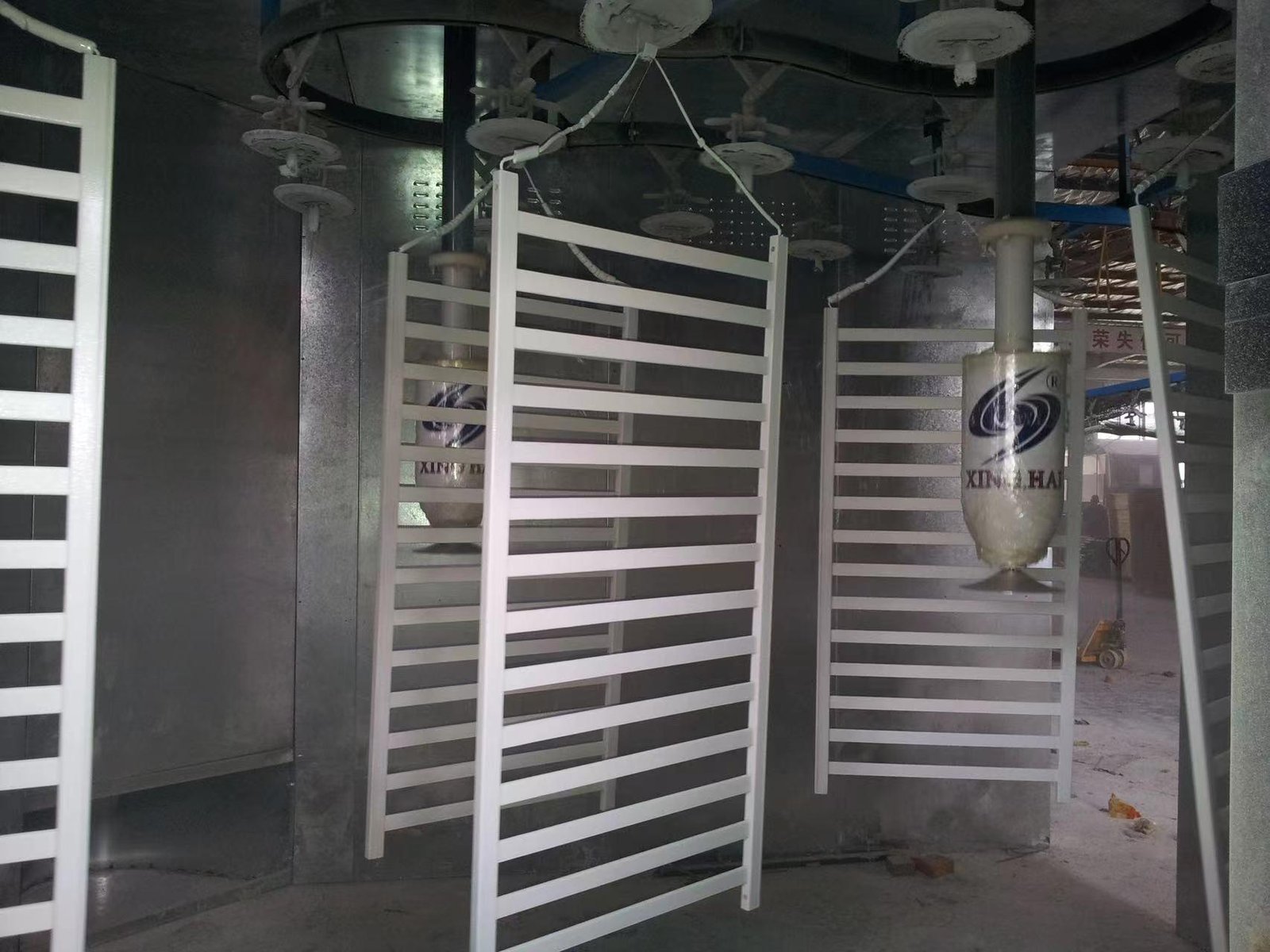
What safety measures should be taken when removing electrostatic spray coatings?
What safety measures should be taken when removing electrostatic spray coatings?
Great question! Removing **electrostatic spray coatings** (like powder coating or electrostatic paint) can be hazardous depending on the removal method—**thermal, chemical, or mechanical**. Here’s a detailed list of safety precautions you should follow:
—
## ✅ **General Safety Precautions (All Methods)**
1. **Wear PPE:**
– Chemical-resistant gloves (for solvents)
– Heat-resistant gloves (for thermal removal)
– Safety goggles or face shield
– Respirator (organic vapor or particulate, depending on method)
– Flame-resistant clothing (for burn-off processes)
2. **Ventilation:**
– Use **proper exhaust systems** to remove fumes, dust, or smoke.
– Outdoor or well-ventilated indoor areas are essential when burning or chemically stripping.
3. **Grounding & Static Control:**
– Even during removal, static buildup is possible—ground tools, parts, and yourself.
– Use anti-static mats or grounding straps.
4. **Fire Extinguisher Ready:**
– Especially for thermal or chemical methods—powder coatings are flammable in dust form.
5. **Proper Waste Disposal:**
– Collect removed material, dust, and chemical waste.
– Follow local hazardous waste regulations.
—
## 🔥 **Thermal Removal (Oven Burn-off or Heat Guns)**
– **Temperatures:** 325°F to 750°F (160°C to 400°C) for burn-off ovens.
– **Risks:** Release of toxic fumes, metal warping, fire hazard.
– **Safety Tips:**
– Use industrial ovens with temperature controls.
– Monitor constantly—never leave unattended.
– Cool parts slowly to avoid thermal shock.
—
## 🧪 **Chemical Stripping**
– **Common Chemicals:** Methylene chloride-based strippers (highly toxic), less toxic citrus or solvent gels.
– **Risks:** Chemical burns, inhalation hazards, environmental harm.
– **Safety Tips:**
– Always use chemical stripping in a **fume hood or outdoors**.
– Double-check chemical compatibility with the substrate.
– Neutralize and clean the surface thoroughly after stripping.
—
## ⚙️ **Mechanical Removal (Sanding, Blasting)**
– **Methods:** Sandblasting, bead blasting, grinding, wire brushing.
– **Risks:** Dust inhalation, surface damage, flying debris.
– **Safety Tips:**
– Use a **dust collection system** or perform in a blast booth.
– Wear **P100 respirators** or full-face respirators.
– Use proper abrasives to avoid damaging the base material.
—
## 📝 **Additional Pro Tips**
✅ **Pre-check the coating type:** Some coatings (epoxies, lead-based paints) release toxic substances when heated or abraded.
✅ **Monitor air quality:** Use air monitoring devices if working indoors.
✅ **Training:** Ensure operators are trained on each removal method’s risks.
—
## 🚧 **Summary: Safety First Rule**
| **Method** | **Main Risks** | **Critical Safety Gear** |
|—————-|—————————————-|——————————————————|
| Thermal | Toxic fumes, fire, heat burns | Heat gloves, respirator, flame-resistant clothing |
| Chemical | Burns, inhalation, environmental hazard | Chemical gloves, goggles, fume hood |
| Mechanical | Dust inhalation, impact injuries | Respirator, goggles, protective clothing |
—
Would you like a **step-by-step removal guide** or help **choosing the best method for your material**?
electrostatic powder spray coating system
electrostatic powder spray gun price
electrostatic powder spray process
electrostatic spray gun powder coating
electrostatic spray powder
electrostatic spray powder coating ct
electrostatic spray powder coating equipment
electrostatic spray powder coating machine
electrostatic spray powder coating machine spraying gun paint system equipment
electrostatic vs powder coated paint
electrostatic vs powder coating

